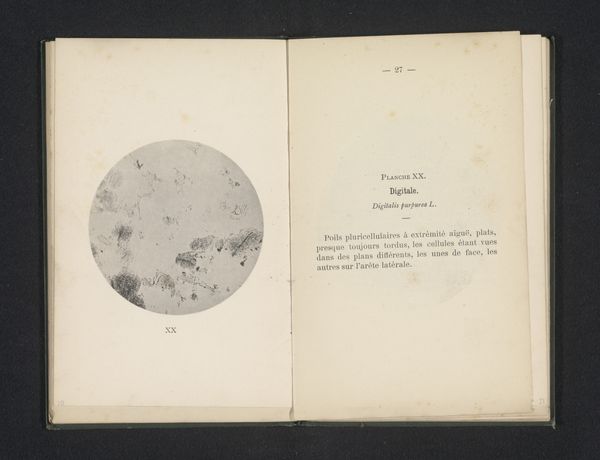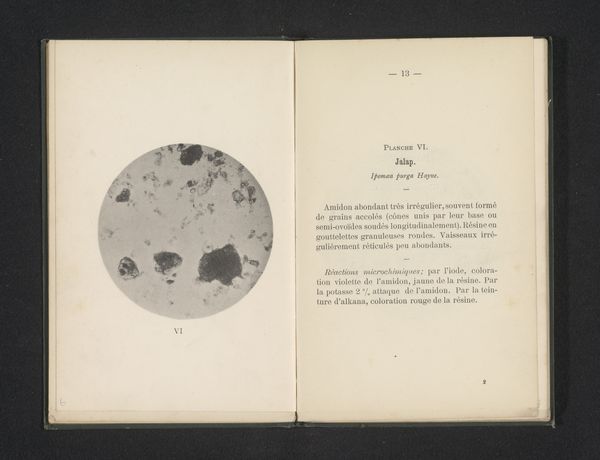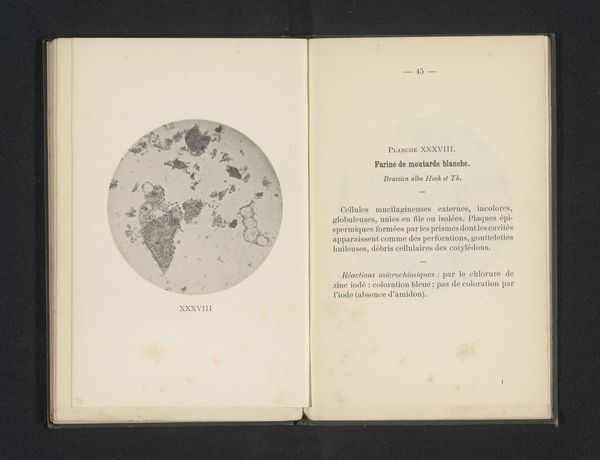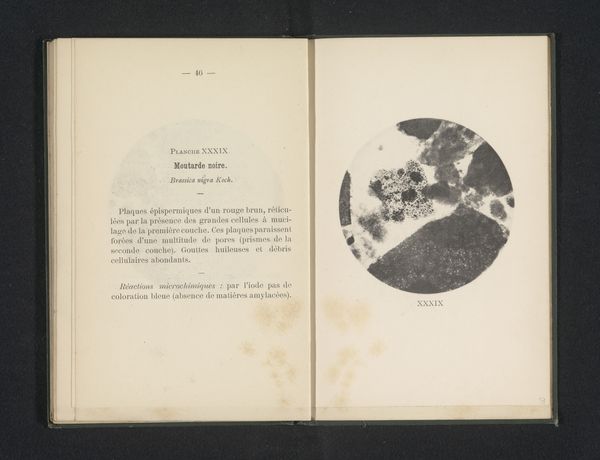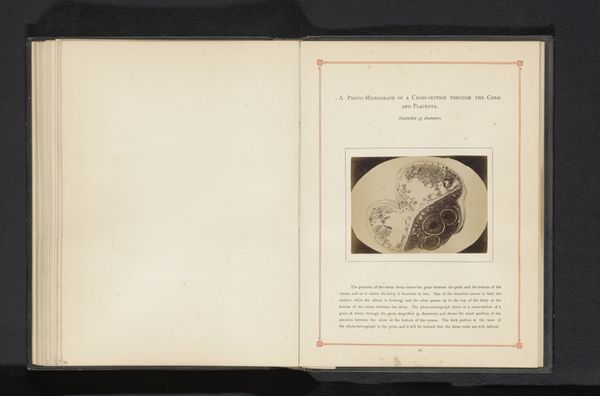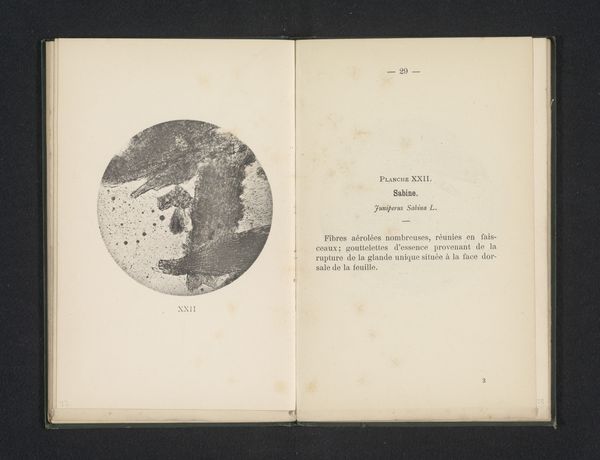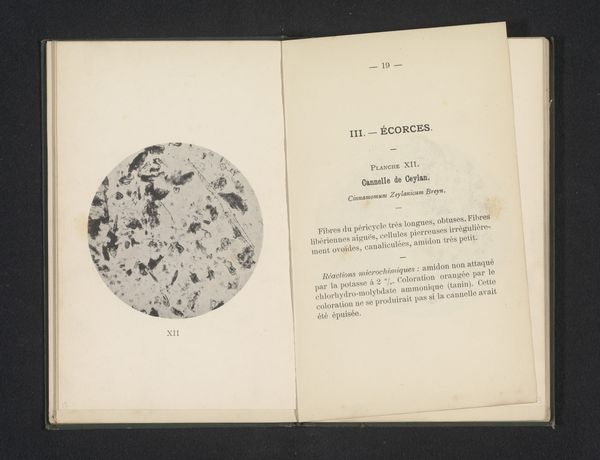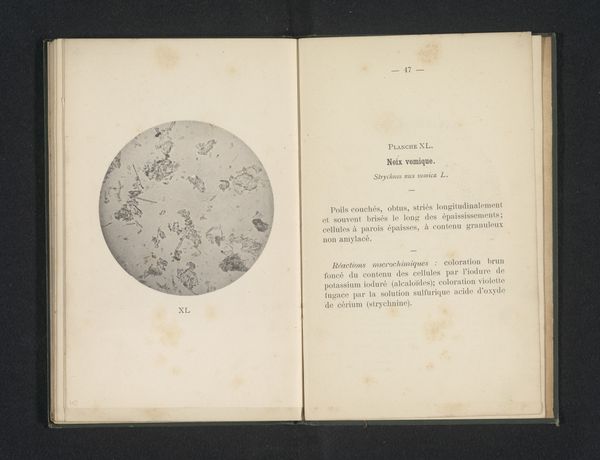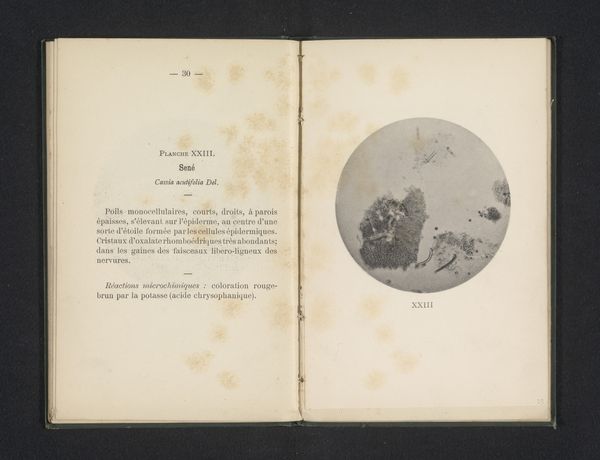
drawing, lithograph, print, paper
#
drawing
#
lithograph
# print
#
paper
Dimensions: height 81 mm, width 81 mm
Copyright: Rijks Museum: Open Domain
Curator: I'm drawn to the strange beauty of this lithograph by Léon Herlant. It's titled "Microscopische weergave van iris florentina", dating from before 1896. Editor: My initial reaction is that this feels oddly unsettling. It looks like cells under a microscope, a cluster of indistinct forms within a defined circle, calling to mind biological specimens rather than high art. There's something vaguely ominous about it. Curator: Well, considering it's a print showing the microscopic structure of an iris, that feeling seems rather apt. I find it fascinating how a scientific process – microscopy – gets translated into a visual medium like lithography. What sort of labor was involved in preparing the slide, focusing the microscope, making the drawing and the subsequent printmaking process? Editor: And there’s the symbolic language. The iris itself has powerful connotations. Think of its connection to the Greek goddess Iris, messenger of the gods, bridging heaven and earth, hinting at communication, new endeavors, or messages yet unseen. Even looking at a sliver can be so powerful in cultural association. Curator: I appreciate that. The process reveals that the perceived whole hides myriad constituent components. What do we lose, or gain, through that shift in scale? Editor: Perhaps a sense of perspective? The scientific lens brings both clarity and detachment. The flower loses some of its romantic, spiritual quality when dissected under a microscope, replaced by clinical observation. Yet there's still an evocative quality. Curator: Agreed. And the print itself – its existence and availability - enables its distribution. It is no longer just for one researcher in the laboratory, but many can benefit from such reproduction. Editor: It reminds us that even scientific renderings carry symbolic weight. Knowledge isn’t simply neutral. It always carries echoes of the culture that produces and consumes it. It’s a conversation. Curator: Precisely! Herlant’s print makes the unseen visible, but simultaneously asks us to reconsider how we view, reproduce, and interpret this kind of knowledge. Editor: The flower as symbol and a subject of observation and the print as process—a fascinating layering that reframes both science and art.
Comments
No comments
Be the first to comment and join the conversation on the ultimate creative platform.
